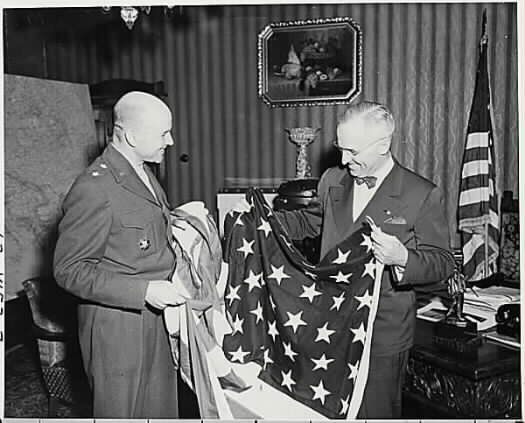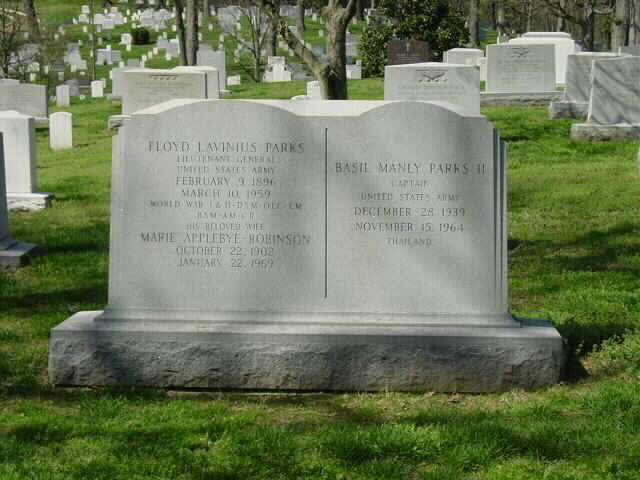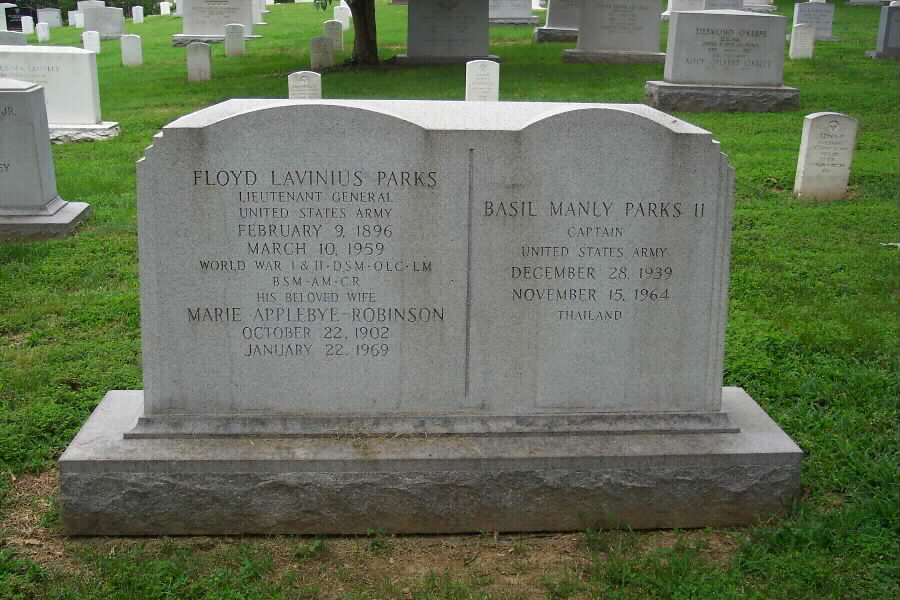General, US Army. He served as Deputy Chief-of-Staff, Army Ground Forces. Advanced to Chief-of-Staff of AGF before being assigned to 69th Infantry Division as Assistant Division Commander. After serving in that position in 1943-44 became Chief-of-Staff of the First Allied Airborne Army in 1944 and Commanding General in 1945, the same year he was promoted to Major General.
He was a former National Guardsman, an intimate of George C. Marshall and one of his prime advisers on public and political relations, at the time of his retirement he was a Lieutenant General commanding the First Army. He died at Washington, DC, March 11, 1959.
He led the first US troops into Berlin at end of WWII. In his capacity as first head of the Kommandatura in Berlin, he was, in effect, city’s first post-war Mayor. He was the Commander of the US occupation zone there August-October 1945. Before taking that post, he handled arrangements for the Potsdam Conference and negotiated with the Soviets to win its consent to free US access to Berlin. As a member of the Kommandatura, he presided over meetings of US, Soviet, British, and French occupation commanders. Previously he had been Chief-of-Staff of the 1st Allied Airborne Army. He participated in air drops into the Netherlands and behind the German forces trying to prevent US crossing of Rhine. After he had relinquished his post in Berlin, he received the US Army Distinguished Service Medal, the British Order of Bath and the Russian Order of Kutuzov.
His next assignment was on the board of the War Department Commission on Policies for Permanent Peace. He was later frequent golfing partner of President Eisenhower, once scoring hole-in-one while playing in a 4-some with the President. In 1953, he became Commanding General of the Second Army, with headquarters at Ft Meade, Maryland. He retired three years later and became executive director of the National Rifle Association, a position he held until death.
He was born at Doutsville, Kentucky, and graduated from Clemson College. He enlisted in the army as a Private in WWI and was commissioned as a Second Lieutenant shortly afterward. He remained in army thereafter and, before going overseas in WWII, served as Chief-of-Staff of the Army Ground Forces. February 9, 1896-March 11, 1959.
He is buried in Section 30, Grave 664-Right Half, Arlington National Cemetery.
Other members of his family, including his wife, Marie Applebye Robinson Parks (October 22, 1902-January 22, 1969); his brother Basil Manly Parks, Colonel, United States Army, who served in World War I and World War II; and his son, Basil Manly Parks II, Captain, United States Army (December 28, 1939-November 13, 1967, “Thailand”) are buried in the same location.

Michael Robert Patterson was born in Arlington and is the son of a former officer of the US Army. So it was no wonder that sooner or later his interests drew him to American history and especially to American military history. Many of his articles can be found on renowned portals like the New York Times, Washingtonpost or Wikipedia.
Reviewed by: Michael Howard


